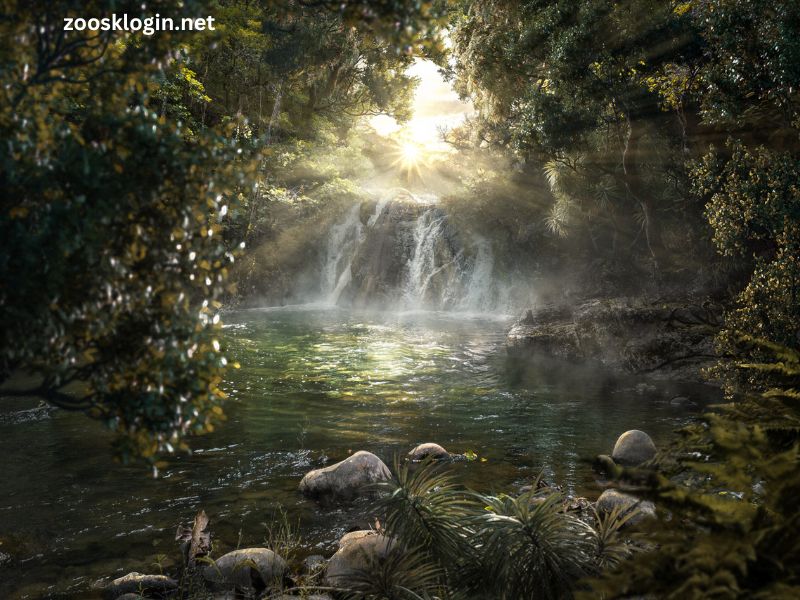The Garden of Eden is one of the most famous locations in religious texts, particularly in the Judeo-Christian tradition. Its depiction as a paradise brimming with lush vegetation, rivers, and a perfect climate has captivated scholars, theologians, and seekers of truth for centuries. The quest to identify the Garden’s actual location has sparked a myriad of theories, each rooted in ancient texts, geography, and archaeology. This article explores various perspectives on where the Garden of Eden might have been located, delving into biblical references, historical interpretations, and modern research.
Biblical Description of Eden
The primary source for understanding the Garden of Eden comes from the Book of Genesis. According to Genesis 2:8-14, God planted a garden in Eden, where He placed Adam and Eve. The text describes four rivers that flowed out of Eden: the Pishon, Gihon, Tigris, and Euphrates. This mention of rivers has led many scholars to associate Eden with regions in the Near East, particularly the area between the Tigris and Euphrates rivers.
The Rivers of Eden
- Tigris and Euphrates: These two rivers are well-known features of modern-day Iraq, particularly around the area of ancient Mesopotamia. The Tigris flows from Turkey through Iraq, while the Euphrates runs parallel to it. Many researchers point to the fertile crescent, a region that historically supported early agriculture and civilization, as a prime candidate for the location of Eden.
- Pishon and Gihon: The other two rivers mentioned in Genesis are less clearly identified. The Pishon is often thought to flow around the land of Havilah, which some scholars link to areas of gold and precious stones, possibly in Arabia or further afield. The Gihon is typically associated with regions of Cush, which some interpret as referring to ancient Ethiopia or other locations in Africa.
Theories on Eden’s Location
1. Mesopotamia
The most widely accepted theory places the Garden of Eden in Mesopotamia, primarily due to the identification of the Tigris and Euphrates. Archaeological findings in this region, such as those at Ur, Babylon, and other ancient cities, provide evidence of early human settlement and agriculture, suggesting that this area was indeed a cradle of civilization. The rich, fertile land would have been conducive to the flourishing of life described in Eden.
2. Armenia
Some scholars propose that the Garden was located in the Armenian Highlands, where the Tigris and Euphrates rivers originate. This theory posits that after the great flood described in Genesis, the location of the Garden was lost or changed due to geological shifts. Proponents of this theory argue that the lush landscape and high altitude could have provided a fitting setting for Eden.
3. The Arabian Peninsula
Another possibility is that the Garden of Eden was situated in the Arabian Peninsula. Some interpretations suggest that the Pishon River may refer to the Wadi Bisha in Saudi Arabia, while Gihon could be linked to ancient regions near the Nile. This theory emphasizes the significance of trade routes and the ancient connections between the Arabian Peninsula and surrounding regions.
4. Symbolic Interpretation
Some modern theologians and scholars argue that the Garden of Eden may not correspond to a specific geographic location. Instead, it represents an idealized state of existence, symbolizing humanity’s original harmony with God, nature, and themselves. This interpretation shifts the focus from a physical search for Eden to a spiritual understanding of paradise, emphasizing themes of innocence, temptation, and the quest for redemption.
5. The Persian Gulf Hypothesis
An intriguing hypothesis posits that the Garden of Eden was once located where the Persian Gulf now exists. This theory is based on the idea that sea levels were significantly lower during the time when Genesis was written, potentially exposing land that is now submerged. Some researchers suggest that archaeological findings in the region support the existence of ancient civilizations that may have thrived on this land, thus correlating with the biblical account.
Archaeological and Historical Insights
While the exact location of the Garden of Eden remains elusive, archaeological discoveries in the surrounding regions provide valuable insights into early human civilization. Mesopotamia, often referred to as the “Cradle of Civilization,” showcases significant advancements in agriculture, writing, and urban development.
The Fertile Crescent
The Fertile Crescent, stretching from the Levant through Mesopotamia and into the Nile Valley, offers fertile soil and access to freshwater, making it an ideal candidate for early human settlement. This area is home to some of the world’s earliest known cities and cultures, such as the Sumerians and Akkadians. The agricultural practices developed in this region laid the foundation for societal advancements that shaped human history.
The Role of Myth and Legend
Many cultures have their own creation stories and paradisiacal gardens, leading some scholars to believe that the Garden of Eden narrative reflects shared mythological themes. For example, the ancient Sumerian civilization had a similar mythological garden called Dilmun, which was associated with immortality and purity. Such parallels suggest that the Garden of Eden might not be a unique story but rather part of a broader narrative about humanity’s origins.
The Garden of Eden in Art and Literature
The Garden of Eden has also had a profound impact on art, literature, and culture throughout history. From Renaissance paintings to modern literature, the imagery of Eden evokes themes of beauty, innocence, and the complexities of human nature.
Artistic Representations
Artists have long been inspired by the concept of Eden, capturing its beauty and the tragic fall of humanity in various forms. Renaissance masters like Botticelli and Michelangelo depicted the Garden with vibrant colors and intricate details, highlighting the allure of paradise. These artworks often serve as allegories for human desire and the loss of innocence, reflecting the garden’s lasting significance in cultural consciousness.
Literary Interpretations
In literature, the Garden of Eden serves as a powerful symbol of both utopia and the human condition. John Milton’s “Paradise Lost” explores themes of free will, temptation, and redemption through the lens of the Eden narrative. This epic poem has influenced countless writers and thinkers, shaping the understanding of humanity’s relationship with divinity.
Conclusion
The search for the Garden of Eden’s location reflects humanity’s deep-seated desire to understand its origins, both in a physical and spiritual sense. While various theories propose different geographic locations—from Mesopotamia to the Arabian Peninsula and beyond—the true essence of Eden may lie in its symbolic significance. Whether viewed through the lens of history, archaeology, or theology, the Garden of Eden represents more than just a physical place; it embodies the pursuit of harmony, innocence, and the ever-present quest for paradise in an imperfect world.
As exploration continues and new discoveries are made, the story of the Garden of Eden remains a vital part of our collective consciousness, inviting us to ponder our place in the world and the enduring hope for a return to paradise.






